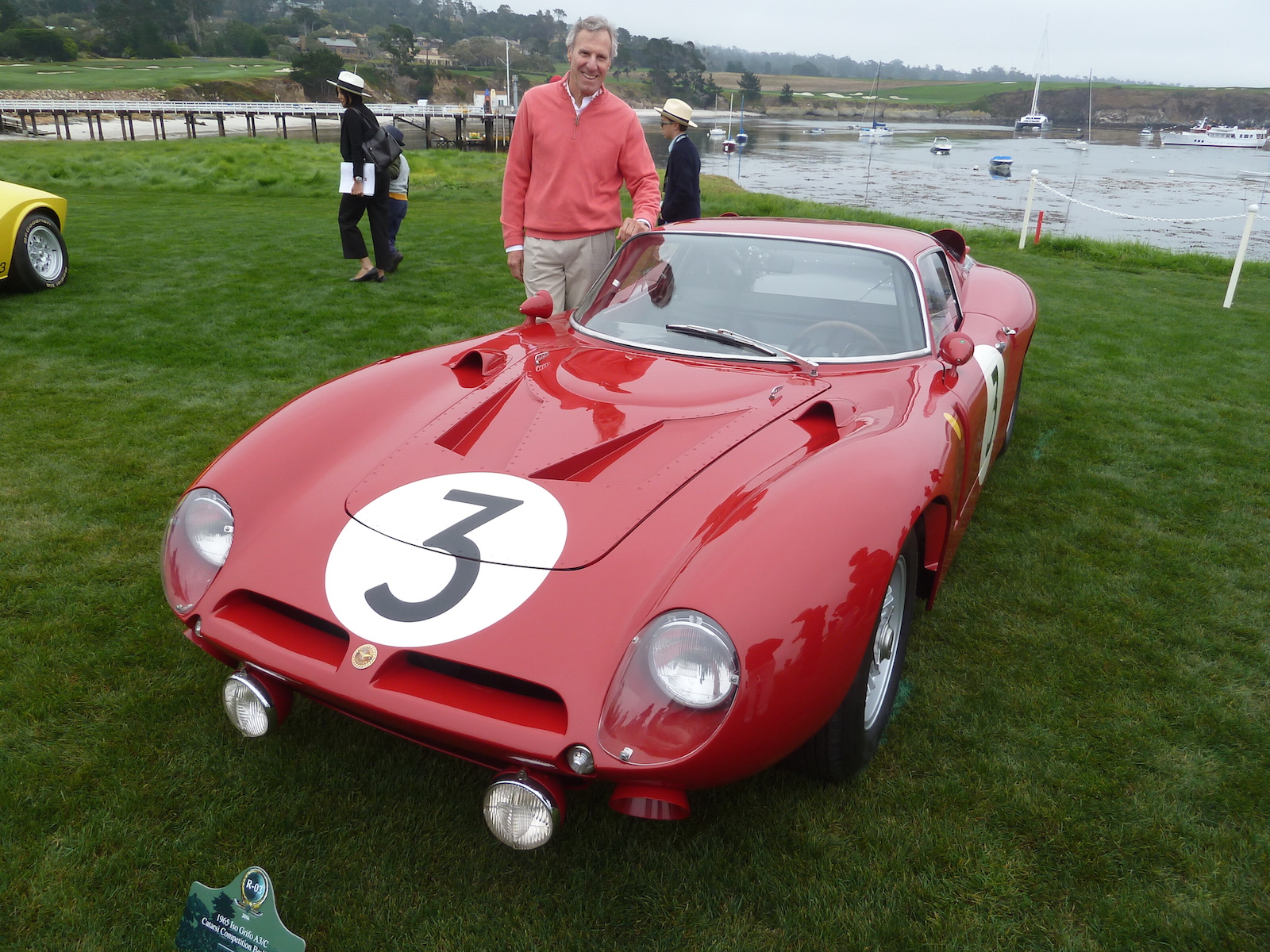Buying or Restoring your Vintage Dream Car is a question I get asked almost several…

1989 Ferrari 328 GTS The Classic Ferrari You Want To Own
July 18, 2018
Mercedes Benz S Class is the most important car for the brand
July 19, 2018
Many automotive enthusiasts are not well aware of who Giotto Bizzarini even was so I am going to tell you guys a little bit about this remarkable man and the driving force of some significant Italian sports cars.
Bizzarini was an Italian engineer whose name became synonymous with motorsports and supercars in the early 1950s and 60s. This Tuscan born “genius” studied aviation aerodynamics at the University of Pisa and later applied all he knew to the recreation of the Fiat 500C into a streamline coupe. Bizzarini not only modified the cars shape for less drag but he also re-engineered the full suspension and driveline for better balance and performance. This was his very first start into the world of car designer slash performance engineer. Bizzarini became so good at his “tuning” approach to Fiats and racecars that it later evolved into a specialized “tuning” business in Italy.
Bizzarini’s reputation as the “genius” was rapidly spreading all over Italy and there was one notable sports car manufacture that seemed to demand his presence. In 1957 Enzo Ferrari hired Bizzarini as an engineer to further develop the Ferrari race cars such as the Pontoon Testarossa, 250GT Spyder and 250GT variants.
It wasn’t until Bizzarini ‘s execution of that Ferrari 250 GTO racecar that made him recognized as a force to be reckoned with. It was Bizzarini’s approach to the re-engineering of the Ferrari 250 chassis and engine that made the car so successful in motorsport racing in it’s time. The Ferrari 250 GT0 is the most expensive and desirable race car in the world today with values over $50 million USD. Many car lovers are not even aware that Giotto Bizzarini was the man behind the creation and success of this model. It would be a sin to discuss the significance of the Ferrari 250 GTO and not mention Bizzarini’s involvement in the cars program and success.
The story of how this Ferrari and Bizzarini relationship came to an end is so typical of old school Italians even of today. You see Enzo Ferrari’s wife was heavily involved in running the operations for Ferrari and there was a massive influence on Bizzarini’s roles and the sports car development program. She was becoming impossible to deal with that Giotto approached Enzo and said clearly that he needed to fire his wife as she was becoming a stalemate for their motorsport division, and to Enzo this division was top priority. A conversation erupted that is was either me or your wife and of course Enzo chose the later and Bizzarini was no longer working under the prancing horses of Maranello.
His fame and the success of the Ferrari 250GTO quickly garnered the attention of another self made Italian, this time from the region of Bologna. It was this sharply dressed businessman known as Ferruccio Lamborghini who offered Bizzarini his next opportunity to make his mark on the Italian sports car world. Ferruccio and Enzo Ferrari had a strong love hate relationship that I won’t go into detail here but the issue revolved around the motorcars Ferrucio was buying for himself. Not satisfied with the cars handling and performance he knocked on Enzos’ door and demanded he make the cars better and to his liking. As I mention above two strong-headed Italians with opposing views never ends well and the vision of Lamborghini Cars was now born. Ferruccio was determined to build his very own sports car to rival Ferrari. Giotto Bizzarrini was the man in charge of the most important part, the V12 engine. Bizzarini designed the famous Lamborgini V12 which found it’s way into the legendary Miura and later Countach models. Many people also do not know that the engine architecture engineered by Bizzarini was even later used in models such as the Diablo and Murcielago with just more modern interpretations. Impressive indeed for this wizard Bizzarini but his relationship under Lamborghini was short lived due to financing which is typical of any new sports car maker.
Fast forward now to the creation of what is known as the Bizzarini GT Strada road car. This car is remarkable because it was so unique and advanced for it’s time and some people can even classify the Bizzarini almost as the first “kit” type car because it used a fiberglass composite body and driveline components from Chevrolets GM division. This was quite common in the USA but in Italy not so much for this era. Today we still see strong partnerships amongst sports and supercar brands such as Pagani and AMG and now Aston Martin with AMG. These partnerships not only make it possible for smaller manufactures to succeed but also offers further development and cross partnering to make their products better for both sides.
The chassis and design of the Bizzarini was truly race inspired, using inboard rear disc brakes and a sophisticated double wishbone suspension on coilovers. Front suspension was also a double wishbone design and the steering used a precise recirculating ball box with a closer ratio. The engine was a front mid engine layout which intruded into the cockpit of the cars overall shape.
The engine was sourced from the Chevrolet Corvette and Giotto chose the smaller and lighter 327 version and adapted his own special manifold with side draft Weber carburetors mated to a Borg Warner T10 4 speed gearbox.
The creation of this car was Bizzarini’s desire to take his working relationship with Isetta and bring them both into racing at Lemans. This very well may have been a more personal goal of Bizzarini to race against Ferrari of the mid 1960’s we will never know. This new race car was officially known as the Iso Bizzarini, a true race car designed by Giotto Bizzarini and stylized by Giorgetto Giugiaro and executed by the Iso and Bizzarini partnership.
The Iso Bizzarini program was specifically targeted towards racing and Chassis A3/C-0222 was the last successful Iso AC/3 race cars during the mid 1960s; This particular car shown here had won it’s class and finished in 9th place at Lemans in 1965. Bizzarini showed the world one of the fastest racing and sports GT cars of the mid 1960’s. The A3/C had a top speed of over 190mph and the only car of this period that was able to top it was the Ford GT40 MK II . After a successful short run in racing this particular car was retired and later converted into a road going car which was later found in Rome Italy. As the car passed on to many owners over the years it was later returned back to race livery and now resides in the collection of Bruce Meyer in California. This particular car is a marvel of the engineering and passion of Giotto Bizzarini and it was this mans determination and fiery will for sports car development that truly shaped every Italian sports car up until our modern cars we all enjoy today. I feel this man should be revered and talked about more within the automotive community because his accomplishments from the very start as the father of the Ferrari GTO have made the two largest sports car brands from Northern Italy so successful over the years. Giotto Bizzarini was a true automotive icon, never forget these pioneers of sports car development each time we drive something today that is truly remarkable.
The mid engine layout is quite obvious and those side draft Webers just scream the business on this car.
 The cockpit of Iso Bizzarini A3/C 0222 you can see how the dash is pushed so far forward and the trans tunnel takes up most of the cockpit due to Bizzarini’s design demands for a mid engine layout.
The cockpit of Iso Bizzarini A3/C 0222 you can see how the dash is pushed so far forward and the trans tunnel takes up most of the cockpit due to Bizzarini’s design demands for a mid engine layout.
 Car enthusiast and collector Bruce Meyer is the current caretaker of chassis A3/C 0222, this is on the lawn of Pebble Beach in Monterey California.
Car enthusiast and collector Bruce Meyer is the current caretaker of chassis A3/C 0222, this is on the lawn of Pebble Beach in Monterey California.
Related Posts
- Buying Or Restoring Your Vintage Dream Car
- The Original Super Sedan The Mercedes 500E
The W124 Mercedes Benz 500E Sport Sedan is quite a significant fixture in the automotive…
- Buying Or Restoring Your Vintage Dream Car
Buying or Restoring your Vintage Dream Car is a question I get asked almost several…





